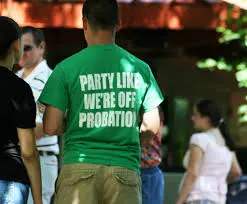Alteración del orden público
Part 1: Understanding Disturbance of the Peace – Legal Foundations and Implications
En el ámbito del derecho penal, alteración del orden público is a term that encapsulates a variety of actions deemed to infringe upon public tranquility and order. This offense, often considered a misdemeanor, is pivotal in safeguarding community well-being against disruptive behaviors. Understanding the legal nuances of disturbance of the peace is essential for navigating potential charges, asserting one’s rights, and recognizing the boundaries of lawful conduct.
Alteración del orden público encompasses acts that are disruptive to the public’s sense of safety and orderliness. Common examples include excessive noise, engaging in brawls in a public place, or any act that maliciously disrupts the peace and quiet of those who are present. The broad definition allows law enforcement and judicial systems flexibility in maintaining public decorum, yet it also necessitates clear legal guidelines to prevent subjective enforcement.
Jurisdictional variances play a significant role in how alteración del orden público is legally approached. While the core concept remains consistent—protecting public peace—specific statutes and ordinances defining and governing such acts can vary significantly from one locale to another. This variability underscores the importance of understanding local laws to effectively navigate or contest charges of disturbing the peace.
Sanciones legales por alteración del orden público can range from fines and community service to, in more severe cases, imprisonment. The determination of penalties often considers factors such as the nature of the disturbance, the defendant’s intent, and any prior similar offenses. Legal professionals play a crucial role in these scenarios, offering defense strategies that can mitigate charges or penalties, such as proving lack of intent or challenging the proportionality of law enforcement’s response.
Medidas preventivas contra alteración del orden público charges emphasize respect for community standards and awareness of the legal implications of one’s actions. Public education on the boundaries of acceptable behavior and the potential consequences of legal infractions can significantly reduce instances of disturbance. Additionally, community programs aimed at resolving conflicts and promoting understanding can alleviate tensions that might otherwise lead to disturbances.
Part 2: Navigating Legal Defenses and the Impact on Communities
Continuing from our examination of alteración del orden público, it’s crucial to explore the legal defenses available to those charged. Legal defenses often revolve around the specifics of the alleged disturbance, including disputing the facts presented by the prosecution or arguing the constitutionality of the accused’s actions, especially in cases where freedom of speech is implicated. Experienced legal counsel can assess the situation to determine the most effective defense strategy, whether it involves challenging the evidence or negotiating for reduced charges.
The role of law enforcement in handling alteración del orden público incidents is paramount. Officers must balance the need to maintain public order with respect for individuals’ rights. Effective training in de-escalation techniques and a thorough understanding of legal thresholds for disturbance acts are essential for law enforcement to navigate these situations judiciously. Community policing strategies that foster positive relationships between law enforcement and community members can also play a significant role in preventing disturbances before they escalate.
El impacto de alteración del orden público charges on communities cannot be understated. Beyond the immediate disruption, frequent incidents can contribute to a pervasive sense of insecurity and discord among residents. Community-led initiatives that focus on mediation, conflict resolution, and fostering understanding among diverse groups can be effective in reducing the likelihood of disturbances. Moreover, such proactive approaches reinforce community bonds and promote a collective commitment to preserving peace.
En conclusión, alteración del orden público represents a critical juncture between individual freedoms and the collective right to tranquility and order. The legal frameworks governing these offenses are designed to protect public welfare while ensuring that enforcement and penalties are justly applied. As communities and legal professionals work together to address and prevent disturbances, a balanced approach that respects legal rights and prioritizes public harmony emerges as the cornerstone of effective resolution. Through education, legal understanding, and community cooperation, society can navigate the challenges posed by disturbance of the peace, ensuring a safe and orderly environment for all.


